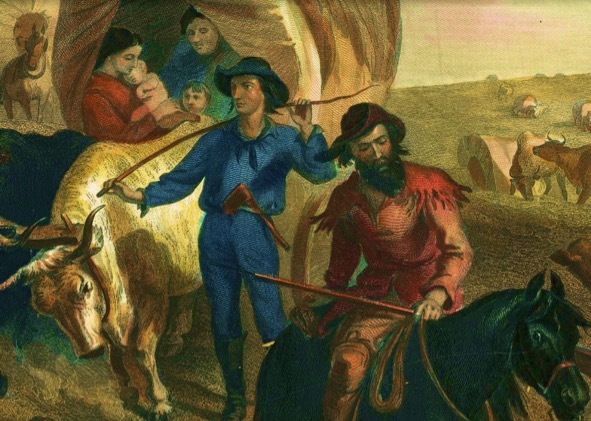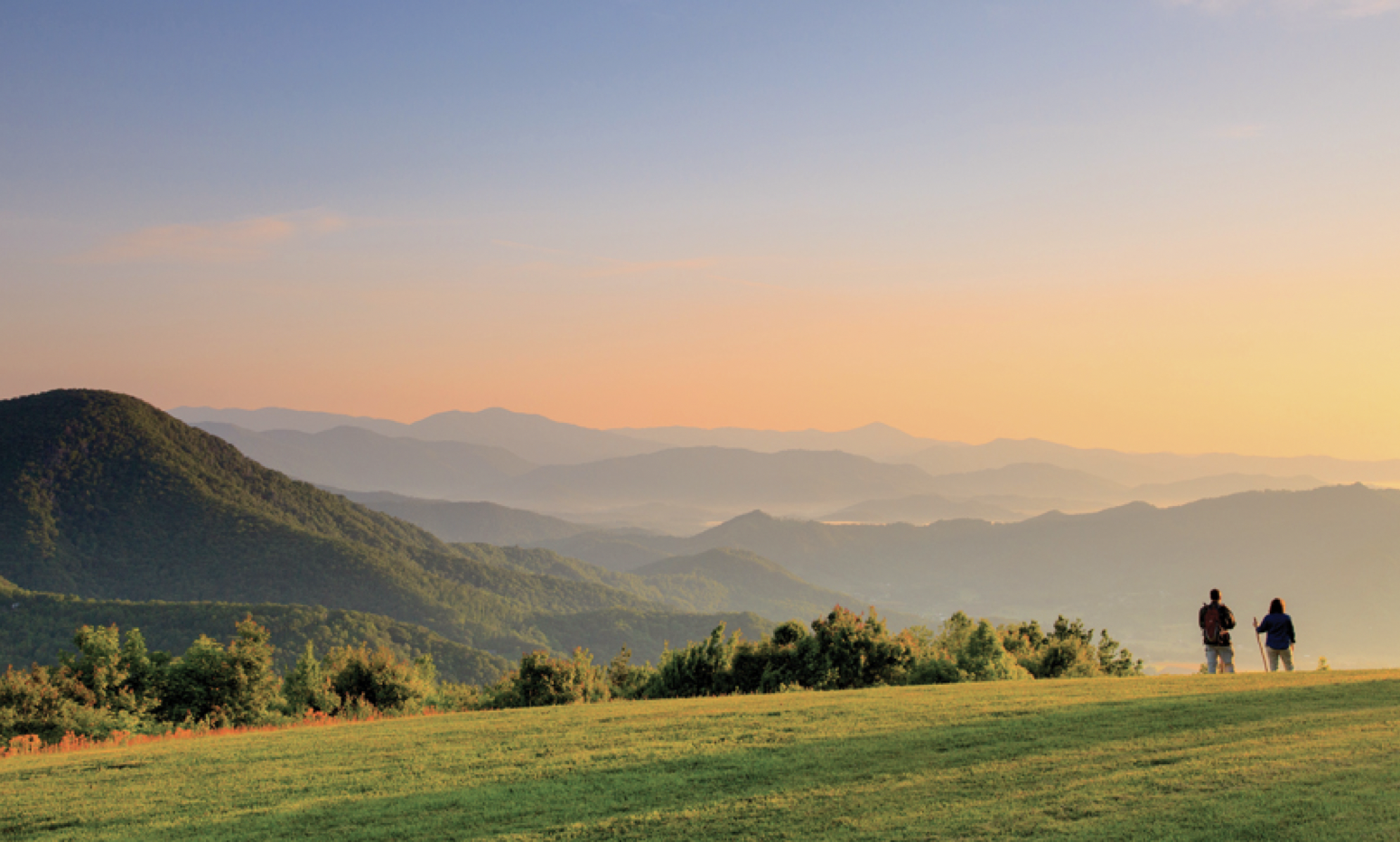Unless the Lord builds the house, they labor in vain that build it.
Our New Frontier

Look to a Homestead Act for Post-COVID Life.
“Abraham Lincoln signed into law the Homestead Act that ensured that the great western prairies of America would be the realm of independent, property-owning citizens—a mightier guarantee of freedom is difficult to imagine.”–Ronald Reagan
The world will change, and America will be changed, by the time we emerge from the coronavirus pandemic.
While Americans are very much focused on beating COVID-19 and getting the country “back in business,” it’s hard to predict exactly what’s in store for us when it does.
Top priorities will certainly include creating a vaccine and cure for the coronavirus, and getting businesses of all sizes to open up—and hopefully start hiring—as soon as possible.
But it’s hard to imagine this pandemic not precipitating cultural shifts and economic ones too. This moment will leave scars.
This means we better be thinking about exactly how we address what’s to come.
A Green Homestead
James Poulos has written the outlines of a “Green Zone Plan.” This entails cordoning off areas of the country which are able to be safe from the coronavirus or other infectious diseases, allowing increasing numbers of us to work and live our natural lives.
He notes that what’s essential is to find a path between “Lockdown World” and “Open for Business,” neither of which is desirable nor tenable for our future.
This may lead us away from the “elite archipelago,” as Poulos calls it, of big cities and exclusive universities and toward the nation’s interior, closer to our (now more deeply appreciated) supply chains and away from environments where you’re more likely to contract a virus.
To be sure, telecommuting will probably become more common and, at some companies, mandatory. Many small businesses are closing and millions of individuals are losing their jobs.
But where is it going to be easier to start a new business? Perhaps in the nation’s interior, where the cost of living is lower, regulations are lighter, and there is less opportunity for a disease to sweep through and wipe out your business.
If you are starting a family, where is it better to begin raising your children? The attractions of the city will be gone, or greatly reduced. Many won’t be able to afford them anyway.
Where are you likely to find a safer, cheaper, and more spread-out environment, one where you can raise your family without the stress of post-COVID urban life, not to mention a gateway to the old-fashioned American Dream of home ownership?
Poulos ends his essay with these thought-provoking lines:
Coronavirus is reopening the American frontier: not for the purpose of casting our big cities into the abyss—far from it—but for pulling deep from our powerful interior and inner spaces, to flow its life throughout the country…. A new frontier beckons.
Following the coronavirus, Americans are going to be struggling financially. Many will want to escape the big city, now too costly and potentially too dangerous to live in. We can help strengthen the middle and working class by adopting a new Homestead Act. This could allow them to have well-paying jobs while raising a family, and will encourage home ownership and possibly the “community” to boot.
We ought to embrace this change, and we are not without precedent for doing so. We ought not to undertake this grand adventure blindly—in opening our new frontier, we should remember how we opened our old one. Perhaps we should consider a new Homestead Act for the 21st century.
Tradition and the Future
The original Homestead Act was a part of American life for over a century. It was a venerated piece of legislation that even today finds its way into high-school textbooks.
It was signed into law by President Abraham Lincoln on May 20, 1862, and it remained effectively in force—with continual modifications and adjustments in price and size of the land allotted—until it was finally brought to a close by Congress in 1976. It remained in force in Alaska until 1986.
The Homestead Act was part of a long debate in American history of what to do with the country’s vast tracts of federal land. As the flag moved west in the 19th century, the government found itself increasingly in possession of huge amounts of sparsely populated territory.
The debate over exactly what to do with this land became a partisan issue. Here’s the simplified summary of this debate: Should the land be sold at a high price to fund various internal improvements (of the kind we today call infrastructure), or should it be dispensed with cheaply to get it into the hands of as many people as quickly as possible?
At the time, passage of the Homestead Act was faced with differences of opinion and often fierce debates among those involved (it must be noted that Daniel Webster’s famous “Second Reply to Hayne,” in which he denounced the doctrines of nullification and secession, actually began as a debate over public land use). But from our 21st-century perspective, the general outlook of the participants in these debates was more unified under the surface than perhaps even they themselves knew.
Both “sides” more or less wanted the same thing, at least eventually: get public land into the hands of Americans and use it to strengthen the country. They had different methods and reasons for doing this, but the result was still generally focused on privatizing the land while serving the common good.
These debates during the early days of the republic culminated in the Homestead Act, signed into law by Abraham Lincoln during the Civil War. With large numbers of Southern plantation owners and defenders of the slave system out of the equation, it was easier to unite Americans around the idea of vastly multiplying the numbers of small-scale, middle-class landowners in the underdeveloped West. Free soil was ascendant.
The system was certainly far from perfect. Speculation and outright fraud was common; many of the frontier families who went out west failed to establish themselves and thrive. At worst they suffered truly lamentable fates.
But the Homestead Act was nevertheless a success which transformed the country. It gave an outlet for newly arrived immigrants, the urban poor, emancipated slaves, or simply Americans who were looking for an opportunity to make better lives for themselves and their families.
It was the Homestead Act, as early 20th century historian Paul Wallace Gates puts it, that “provided the lodestone, the directing force, that set in motion continued waves of settlers in search of free land.”
And this, in turn, “made possible the financing and construction of the railroads through the Plains, into the Interior Basin, and to the Pacific Coast. Homestead, above all other factors, made possible the fast growth of the West,” despite the problems that often came with this explosive movement of people and sometimes displacement of others.
The Homestead Act was instrumental in ramping up the population of the interior and connecting the coasts as settlers poured into Nebraska, Michigan, Illinois, and so many other states.
As historian Allen Guelzo writes, the Homestead Act was “in modern terms, the greatest privatization scheme in American history.”
This had a lasting and timeless impact of the trajectory and culture of America. There’s a good reason the Western genre of movies dwells on and even romanticizes this limited slice of time in our country’s westward development. From the humble homes and small farms of these settlers, a great and powerful nation was built, imbued with an indelible cultural wistfulness for pushing frontier boundaries, whatever that frontier may be.
Where We Went Wrong
But the ethos behind the Homestead Act was reversed in the progressive era. New Dealers and environmentalists insisted on keeping vast amounts of western land in public rather than private hands. Hence the eventual repeal of the Homestead Act in the 1970s and aggressive federal land grabs using, and often abusing, national park designations.
The result is that a huge amount of land, especially in the West, is in the hands of the federal government. In fact, the “federal government owns roughly 640 million acres, about 28% of the 2.27 billion acres of land in the United States,” according to the Congressional Research Service. While there is some utility in keeping some land in the hands of the government for national defense and conservation purposes, this hardly justifies the sheer quantity of land the government owns.
Of all the states in the country’s interior, Texas has the least amount of land owned by the federal government. No wonder it’s been one of the country’s economic engines over the last few decades.
It must also be noted that the federal government has done a terrible job of managing this land in recent years, contributing to the massive uptick in huge wildfires we now see in western states during fire season.
This, of course, opens up one of the potential problems associated with more Americans moving into the interior and rural parts of the country. There is going to have to be a major adjustment as far as how we manage our forests and other, now overgrown, areas.
Also, as FCC Chairman Ajit Pai has stressed, we absolutely have to aggressively expand internet access in the rural parts of America. This will not only make more areas habitable and desirable, but will make us competitive with Communist China in its efforts to dominate the new world of 5G networks.
But newcomers and technological advancements, as they did in the past, will likely coincide. As the Homestead Act travelled alongside the development of railroads, our new growth may come with a mass uptick in high-speed internet.
Technology made once-uninhabitable parts of America habitable—and not only habitable, but desirable.
Just look at Las Vegas, which rose out of an arid desert, and much of Florida, once a vast, unlivable swamp, now a preferred destination for retirees because of the miracle of air conditioning.
A Post-COVID Life
The old Homestead Act was geared toward farmers and frontier settlers—the new one would be less agricultural in focus, but still geared toward average Americans in the post-COVID 21st century.
Imagine this. A family with young children or maybe soon to be expecting children, is living in one of America’s big coastal cities. They emerge from the lockdown with perhaps one spouse unemployed, the other telecommuting and working from home.
Public transportation is now a dicey proposition with its easy transfer of disease, and the cost of rent has outpaced their reduced income. So they consider applying for government assistance.
They are then offered a tax break and to move to land recently released by the federal government and now being used to build affordable housing in, say, Utah or Michigan—a scenario that Sen. Mike Lee, R-Utah, laid out in 2018 when calling for a return to the Homestead Act.
This may have been appealing even before COVID. But now the chance to escape the high-stress and high-cost environment of a painfully ravaged city would be even more appealing.
This migration would both provide an economic boon and increasing tax base for the interior, but may also give big cities time to adjust to the realities of operating in a world of pandemics.
One way or another, our lives will be changed by the impact of the coronavirus, and new challenges will be added to the old ones. Stagnation, or what some environmentalists call “degrowth” in response to this challenge, is entirely foreign and unacceptable to the country of the self-made man—for the literal and figurative descendants of the pioneers.
To avoid a lasting malaise or flirtations with socialism and other dead-end ideologies, we should instead look to the mentality of our forebears, who turned a sparsely populated set of states at the edge of civilization to a vast empire of liberty extending from sea to shining sea.
Perhaps another look at the Homestead Act, or at least the mentality that brought it to fruition, will help Americans get back on their feet quickly and ensure that we have yet another American century.
The American Mind presents a range of perspectives. Views are writers’ own and do not necessarily represent those of The Claremont Institute.
The American Mind is a publication of the Claremont Institute, a non-profit 501(c)(3) organization, dedicated to restoring the principles of the American Founding to their rightful, preeminent authority in our national life. Interested in supporting our work? Gifts to the Claremont Institute are tax-deductible.
Americans must recover their commitment to personal responsibility.
Management is killing us. The virus demands we break free.
To beat coronavirus, get Americans back to living natural lives.




